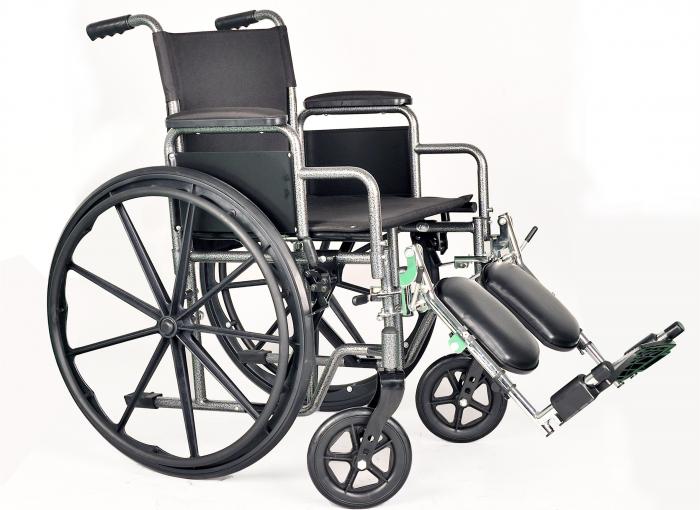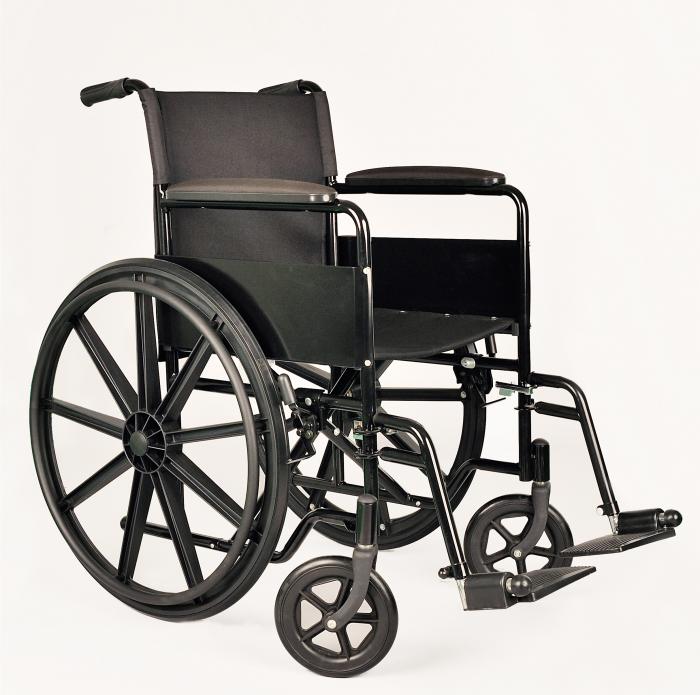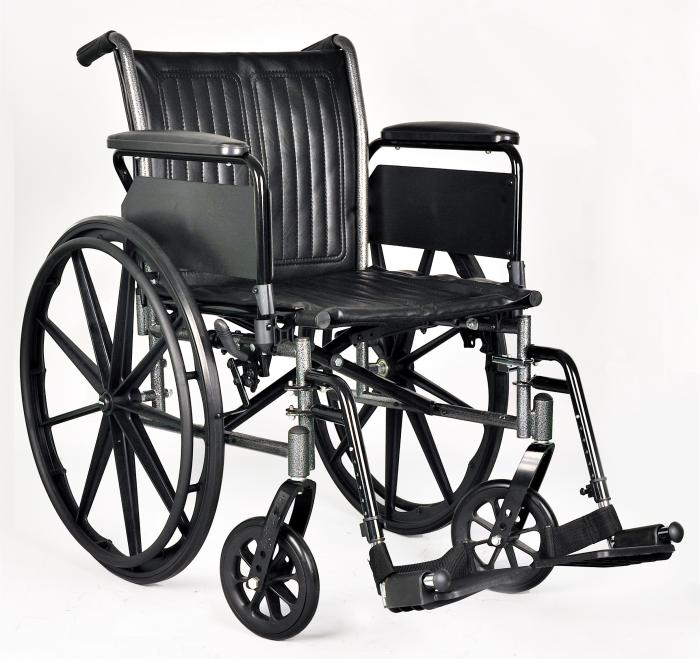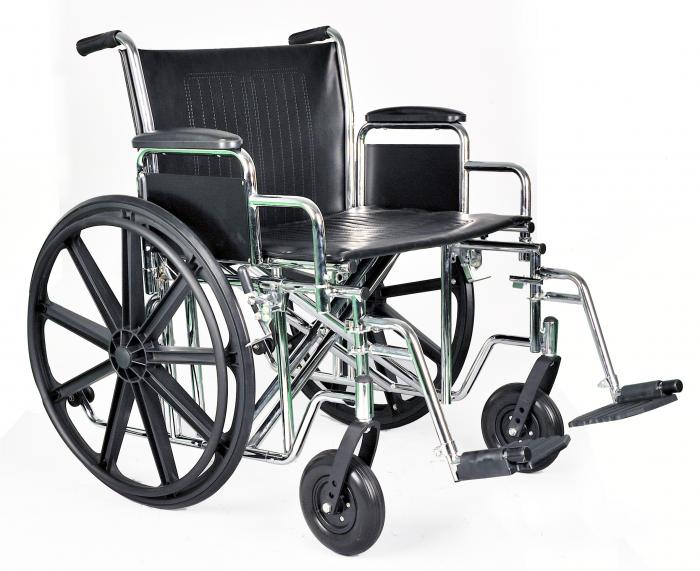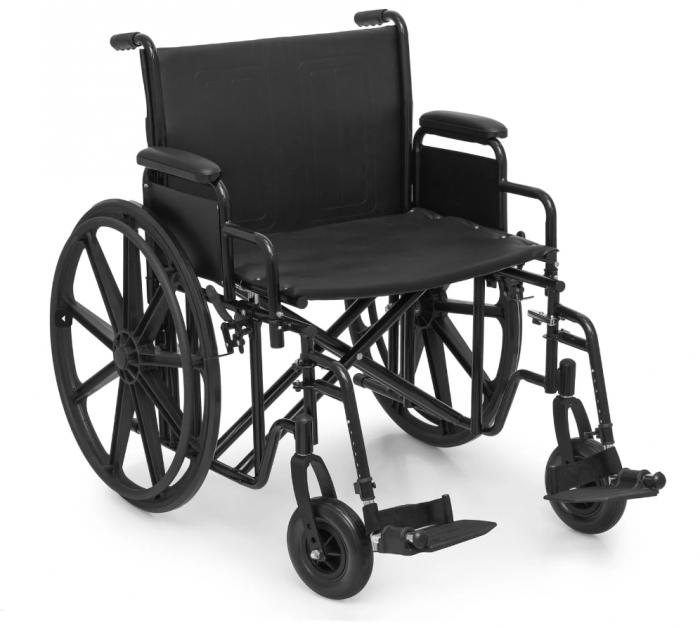| Name: | Standard Wheelchair |
|---|---|
| Model No.: | BES-WL104 |
| Product Name: | Standard Wheelchairs |
| Brand: | BESCO |
| Keywords: | Standard Wheelchairs,Manual Wheelchairs,wheelchairs for sale,Wholesale wheelchairs |
| LEAD TIME: | 30 days |
| MOQ: | 50 units |
| Sample: | Available |
| SAMPLES: | Available |
| Payment Term: | T/T in advance |
| Country of Original: | China |
| Weight Capacity: | 120 kgs |
| Port: | Shanghai |
| Office: | Zhengzhou,China |
Products Description
Features:
Powder Coated
Dual Axle,seat height adjustable
Detachable desk arm
Swing-away footrest with plastic footplate,available with heel loops
8’’ front casters,24’’ rear mag wheels with plastic hand rim
Durable and easy clean Nylon back and seat
Push-to-lock brakes
Available with anti-tippers
Wheelchairs for Sale,China wheelchairs
A Standard wheelchairs is a mobilized form of chair using two or more wheels, a footrest, and an armrest usually cushioned. It is used when walking is difficult or impossible to do due to illnesses, injury, disabilities, or age-related health conditions. Wheelchairs provide mobility, postural support, and freedom to those who cannot walk or have difficulty walking, enabling them to move around, participate in everyday activities, and live life on their own terms.
Wheelchairs come in a wide variety of formats to meet the specific needs of their users. They may include specialized seating adaptions, and individualized controls, and may be specific to particular activities, as with sports wheelchairs and beach wheelchairs. The most widely recognized distinction is between motorized wheelchairs, where propulsion is provided by batteries and electric motors, and manual wheelchairs, where the propulsive force is provided either by the wheelchair user or occupant pushing the wheelchair by hand (self-propelled), by an attendant pushing from the rear using the handle(s), or by an attendant pushing from the side use a handle attachment.
Overall Width(open) | Overall Width(folding) | Seat Width | Seat Depth | Seat-to-Floor Height | Overall Height | Overall Depth | Weight Capacity |
23.62’’ | 11.8’’ | 16’’ | 16’’ | 20.47’’ | 35.43’’ | 43’’ | 360lbs |
25.59’’ | 11.8’’ | 18’’ | 16’’ | 20.47’’ | 35.43’’ | 43’’ | 360lbs |
27.56’’ | 11.8’’ | 20’’ | 16’’ | 20.47’’ | 35.43’’ | 43’’ | 360lbs |
How to use a manual wheelchair ?
To effectively use a manual wheelchair, it's essential to understand its parts, how to propel it forward and backward, turn, stop, and safely navigate obstacles like curbs and inclines. Proper fitting and adjustments are also crucial for comfort and safety.
Getting Started:
1. Wheelchair Setup:
Ensure the wheelchair is properly adjusted to your body size and shape. This includes seat height, backrest angle, footrest position, and armrest height.
2. Brakes:
Engage the wheel locks before transferring into or out of the wheelchair, and when stationary on inclines or uneven surfaces.
3. Footplates:
Swing the footplates out of the way or remove them when transferring in or out.
4. Armrests:
Armrests can be removed on some chairs for easier transfers.
Propelling the Wheelchair:
Forward: Grip the hand rims on the large rear wheels, push forward and down, and release to repeat the motion.
Backward: Grip the hand rims near the front of the chair and push backward and down.
Turning: To turn, propel the opposite wheel forward while either slowing or stopping the other wheel.
Stopping:
Brakes: Engage the wheel locks for a secure stop.
Friction: Grip the hand rims to slow down using friction.
Navigating Obstacles:
Curb Descent:
Reverse the wheelchair so the larger wheels are at the edge of the curb. Guide the wheels down gently, then use the tipping lever to lift the front wheels and gently lower them.
Curb Ascent:
Use the tipping lever to tilt the chair back and lift the front wheels onto the curb. Then, gently roll the rear wheels up the curb.
Incline Descent:
For inclines, the caregiver can assist by holding the handles firmly and controlling the descent.
Safety:
Proper Fit:
Ensure the wheelchair is properly fitted to your body size and shape to prevent discomfort and strain.
Brake Use:
Always engage the brakes when transferring or when the wheelchair is stationary on uneven surfaces.
Obstacles:
Be aware of your surroundings and any potential obstacles when moving forward, backward, or turning.
